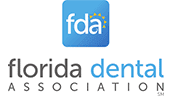Welcome to the Innovative Dental Aesthetics blog, where we delve into the world of dental care with a focus on prosthetic dentistry. At Innovative Dental Aesthetics, Dr. Gatta and his team are dedicated to not only addressing your immediate dental needs but also ensuring the overall health of your smile. Raise your hand if you’ve ever cringed at the word “cavity”! Join us as we take proactive steps toward effective cavity detection, while also reminding you that we are always here to shed light on how a prosthodontist can cater to your broader dental concerns. Here are some easy-to-understand tips for sniffing out potential cavities before they cause major problems. And if you have any questions about your smile whatsoever — we are here.
Tooth decay is caused by bacteria in the mouth that eats away at tooth enamel. This can lead to a cavity (a hole in the tooth). A cavity in your tooth doesn’t always have symptoms at first, but as it grows into the deeper layers of your tooth, you may feel it.
Common cavity symptoms include tooth pain or sensitivity and visible changes in the tooth, like holes or pits.
This article explains how cavities look and feel, what happens if they go untreated, and how dentists diagnose them.
Visible Small Cavity Signs
You may not notice a cavity right away since the changes are visually small. Also, it’s possible to have a cavity and not feel anything.
However, even though small cavities may have visible changes, most people don’t examine their teeth routinely, especially those that are more difficult to see in the back of your mouth.
Teeth in the back of the mouth are where cavities often occur. Cavities most commonly pop up on chewing surfaces and between teeth. Both of these areas are difficult to see yourself.
Warning signs of a cavity include:
- White spots on the teeth
- Spots that turn darker shades of gray, brown, or black
- Continually getting food trapped between your teeth
Invisible Cavities
An invisible cavity (also called a hidden cavity) is one you can’t see with the naked eye. Usually, that’s because the cavity is between teeth.
Dental X-rays can catch early cavities between teeth and those not yet visible on the tooth’s surface. Researchers have found that X-rays increase the diagnosis of hidden cavities by nearly 10 times.
How Cavity Symptoms Feel (or Don’t Feel)
It can help to understand what a cavity feels like.
Cavity symptoms include:
- Tooth pain that can be sharp or dull
- Tooth pain that occurs when you bite down
- Tooth sensitivity (to hot, cold, or sweet things)
- Feeling pits or holes in your tooth
Researchers call cavities one of the most prevalent diseases among children globally.
Untreated, Worsening Cavity Symptoms
Before a cavity begins, there are things you can do to prevent it. Some steps for reducing your risk of a cavity include:
- Using fluoride in water, fluoride toothpaste, mouth rinse, and dental applications
- Minimizing sugar and starches
- Limiting fruit juice
- Brushing your teeth two times a day
- Applying sealants to molars (for kids)
That said, once you have a cavity, it will likely continue to get worse if left untreated. A cavity spreading beyond the enamel could lead to an abscessed tooth (a severe infection).
An abscess might occur if the pulp (the soft tissue in the root) dies and swells. When bacteria enter the pulp, it causes an infection, leading to a pocket of pus that forms around the root. This infection can spread throughout the body and can sometimes be fatal.
Symptoms of a tooth abscess include:
- Pain
- Swelling
- Redness in the gums
- Bad taste in the mouth
- Fever
Will a Cavity Heal on Its Own?
In the early stages, when there is a white spot in the tooth’s enamel, for instance, the enamel could repair itself with minerals from saliva and fluoride. However, as a cavity develops and becomes worse, the enamel becomes too weak and destroyed to repair itself.
Seeing a Dentist: How to Tell for Sure
While cavities offer some visual signs, they are not always on visible parts of your teeth. Cavities are sometimes in between teeth and in the back of your mouth. To be sure, you’ll need to see a dentist, who will visually examine your teeth and, if necessary, do an X-ray.
Cavity Inspection
Dentists use a visual inspection to determine if a cavity is present on a tooth. The International Caries Detection and Assessment System (ICDAS) is a clinical scoring system that measures surface changes and the depth of cavities. Cavities are coded between 0 and 6, with the lower score indicating a healthy tooth and the higher score showing extensive tooth damage.
Cavity on X-Ray
An X-ray is the most definitive way to diagnose a cavity. X-rays allow dentists to see through layers of teeth to determine how severe a cavity is. This can inform their treatment plan. However, X-rays are not foolproof, and they sometimes underestimate the depth of a cavity.
When you get a dental X-ray, a lead apron will cover your torso to protect your body and organs from radiation. X-ray film is placed in your mouth, and a healthcare provider will leave the room to take the X-ray.
When they return, they will remove the film from your mouth. The results are available for a dentist to review immediately.
Seeing a Dentist With and Without Insurance
If you have dental insurance, seeing a dentist for preventative and acute care is less expensive. However, even with insurance, you must still cover some costs. It is common for dental insurance plans to cover a percentage of fillings.
Depending on your plan, it covers between 50%-80%. Without dental insurance, it is expensive to cover the cost of dental care. If you can’t afford to pay for a filling, you may be able to find low-cost options.
The following may be available to you:
- Community health centers for low-income residents
- Medicare for adults over 65
- Medicaid for low-income adults, children, and people with disabilities
- Children’s Health Insurance Program (CHIP) for those with kids who don’t qualify for Medicaid but can’t afford private insurance
- Veterans Administration (VA) benefits for veterans
- Dental schools that offer reduced fee services
- Participation in clinical trials
- State health insurance programs
Don’t wait for pain to strike! Make oral health a priority and enjoy a confident, healthy smile for years to come. Schedule an appointment with us today at (561) 997-6622. Dr. Gatta and his team will take excellent care of you, whether it is a cavity — or a whole mouth restoration. You can also join us on our Instagram for daily tips!
Reference: [https://www.verywellhealth.com/how-to-tell-if-you-have-a-cavity-8414814]














